The TUTase URT1 connects decapping activators and prevents the accumulation of excessively deadenylated mRNAs to avoid siRNA biogenesis
- PMID: 33637717
- PMCID: PMC7910438
- DOI: 10.1038/s41467-021-21382-2
The TUTase URT1 connects decapping activators and prevents the accumulation of excessively deadenylated mRNAs to avoid siRNA biogenesis
Abstract
Uridylation is a widespread modification destabilizing eukaryotic mRNAs. Yet, molecular mechanisms underlying TUTase-mediated mRNA degradation remain mostly unresolved. Here, we report that the Arabidopsis TUTase URT1 participates in a molecular network connecting several translational repressors/decapping activators. URT1 directly interacts with DECAPPING 5 (DCP5), the Arabidopsis ortholog of human LSM14 and yeast Scd6, and this interaction connects URT1 to additional decay factors like DDX6/Dhh1-like RNA helicases. Nanopore direct RNA sequencing reveals a global role of URT1 in shaping poly(A) tail length, notably by preventing the accumulation of excessively deadenylated mRNAs. Based on in vitro and in planta data, we propose a model that explains how URT1 could reduce the accumulation of oligo(A)-tailed mRNAs both by favoring their degradation and because 3' terminal uridines intrinsically hinder deadenylation. Importantly, preventing the accumulation of excessively deadenylated mRNAs avoids the biogenesis of illegitimate siRNAs that silence endogenous mRNAs and perturb Arabidopsis growth and development.
Conflict of interest statement
The authors declare no competing interests.
Figures
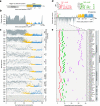
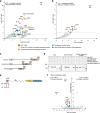
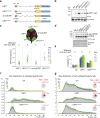
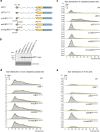
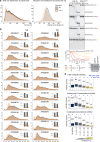


Similar articles
-
Uridylation and PABP Cooperate to Repair mRNA Deadenylated Ends in Arabidopsis.Cell Rep. 2016 Mar 22;14(11):2707-17. doi: 10.1016/j.celrep.2016.02.060. Epub 2016 Mar 10. Cell Rep. 2016. PMID: 26972004
-
Uridylation prevents 3' trimming of oligoadenylated mRNAs.Nucleic Acids Res. 2013 Aug;41(14):7115-27. doi: 10.1093/nar/gkt465. Epub 2013 Jun 6. Nucleic Acids Res. 2013. PMID: 23748567 Free PMC article.
-
Uridylation and the SKI complex orchestrate the Calvin cycle of photosynthesis through RNA surveillance of TKL1 in Arabidopsis.Proc Natl Acad Sci U S A. 2022 Sep 20;119(38):e2205842119. doi: 10.1073/pnas.2205842119. Epub 2022 Sep 12. Proc Natl Acad Sci U S A. 2022. PMID: 36095196 Free PMC article.
-
3' Uridylation and the regulation of RNA function in the cytoplasm.Biochem Soc Trans. 2010 Aug;38(4):1150-3. doi: 10.1042/BST0381150. Biochem Soc Trans. 2010. PMID: 20659020 Review.
-
Xp54 and related (DDX6-like) RNA helicases: roles in messenger RNP assembly, translation regulation and RNA degradation.Nucleic Acids Res. 2006 Jun 12;34(10):3082-94. doi: 10.1093/nar/gkl409. Print 2006. Nucleic Acids Res. 2006. PMID: 16769775 Free PMC article. Review.
Cited by
-
Functions and mechanisms of RNA tailing by nucleotidyl transferase proteins in plants.Front Plant Sci. 2024 Oct 15;15:1452347. doi: 10.3389/fpls.2024.1452347. eCollection 2024. Front Plant Sci. 2024. PMID: 39474218 Free PMC article. Review.
-
RNA modifications: importance in immune cell biology and related diseases.Signal Transduct Target Ther. 2022 Sep 22;7(1):334. doi: 10.1038/s41392-022-01175-9. Signal Transduct Target Ther. 2022. PMID: 36138023 Free PMC article. Review.
-
Arabidopsis SGS3 is recruited to chromatin by CHR11 to select RNA that initiate siRNA production.Nat Commun. 2025 Mar 26;16(1):2978. doi: 10.1038/s41467-025-57394-5. Nat Commun. 2025. PMID: 40140371 Free PMC article.
-
Multi-transcriptomics identifies targets of the endoribonuclease DNE1 and highlights its coordination with decapping.Plant Cell. 2024 Sep 3;36(9):3674-3688. doi: 10.1093/plcell/koae175. Plant Cell. 2024. PMID: 38869231 Free PMC article.
-
The plant siRNA landscape.Plant Cell. 2024 Jan 30;36(2):246-275. doi: 10.1093/plcell/koad253. Plant Cell. 2024. PMID: 37772967 Free PMC article. Review.
References
-
- De Almeida, C., Scheer, H., Zuber, H. & Gagliardi, D. RNA uridylation: a key post-transcriptional modification shaping the coding and non-coding transcriptome. WIREs RNA e1440 10.1002/wrna.1440 (2018). - PubMed
Publication types
MeSH terms
Substances
LinkOut - more resources
Full Text Sources
Other Literature Sources
Molecular Biology Databases

